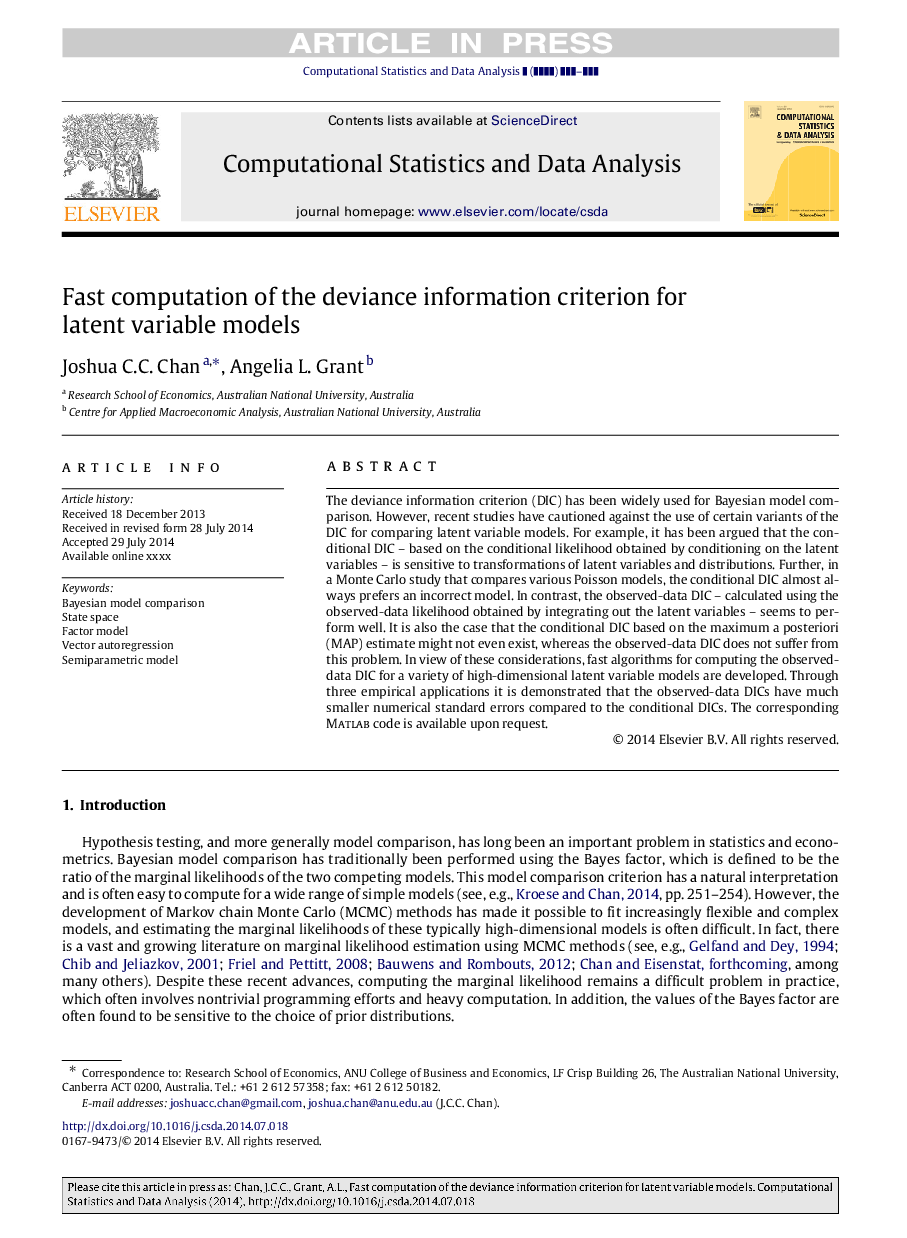| Article ID | Journal | Published Year | Pages | File Type |
|---|---|---|---|---|
| 6869242 | Computational Statistics & Data Analysis | 2016 | 13 Pages |
Abstract
The deviance information criterion (DIC) has been widely used for Bayesian model comparison. However, recent studies have cautioned against the use of certain variants of the DIC for comparing latent variable models. For example, it has been argued that the conditional DIC-based on the conditional likelihood obtained by conditioning on the latent variables-is sensitive to transformations of latent variables and distributions. Further, in a Monte Carlo study that compares various Poisson models, the conditional DIC almost always prefers an incorrect model. In contrast, the observed-data DIC-calculated using the observed-data likelihood obtained by integrating out the latent variables-seems to perform well. It is also the case that the conditional DIC based on the maximum a posteriori (MAP) estimate might not even exist, whereas the observed-data DIC does not suffer from this problem. In view of these considerations, fast algorithms for computing the observed-data DIC for a variety of high-dimensional latent variable models are developed. Through three empirical applications it is demonstrated that the observed-data DICs have much smaller numerical standard errors compared to the conditional DICs. The corresponding Matlab code is available upon request.
Related Topics
Physical Sciences and Engineering
Computer Science
Computational Theory and Mathematics
Authors
Joshua C.C. Chan, Angelia L. Grant,
